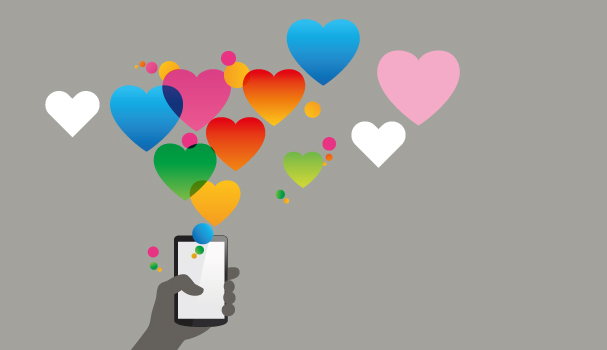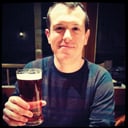The days of meeting that special someone in a chance encounter on the dancefloor may be numbered. At the turn of the millennium, 100,000 people in the UK were turning to online dating in their quest for love. This figure now stands at a staggering 9 million, with 5 million logging on every single month. When seeking reasons for such a startling rise, there’s really only one culprit: technology. “Ten years ago, online dating was seen as this thing you did when you reached ‘that age’ and you really wanted to settle down,” says Eden Blackman, founder of WouldLikeToMeet.me, an online dating service. “There has been an enormous uptake among the younger generation and that’s simply because they know no different than using their phone or laptop to connect with people.”
There’s no doubt that online dating has come a long way since the birth of match.com in 1993. “Now, the dating industry is barely recognisable from what it once was,” says Jeremy Corenbloom, marketing director at match.com (UK & Ireland). “A YouGov survey in June 2013 revealed that one in four relationships in the UK starts online and dating sites are now the third most popular way to find a partner.” Match pioneered the idea of commercialising love and now boasts 25 websites worldwide in eight languages, spanning five continents. It remains the top dog to this day but competition is growing. There are now 1,700 dating sites in the UK alone, catering for a whole range of different demographics and interests. Many of them are supported by a mobile app or, in some cases, are mobile-only. “Mobile for dating is not a trend. It is what it was always meant to be,” says Robyn Exton, founder of Dattch, the mobile dating app for lesbians. “Dating, especially for British people, has always been an inherently private experience. Mobile suits that perfectly.”
With the market only set for further expansion, new entrants have their work cut out if they are to stand out from the crowd. “If you don’t have a USP in the online dating sector, I wouldn’t even bother,” says Blackman. “It’s difficult enough trying to launch something new but when you’re trying to launch something that does what everyone else does you are really fighting against the wind from day one.” Blackman’s service WouldLikeToMeet.me offers users the comfort of knowing that every single person on the site is exactly who they say they are. As part of the registration process, people are asked to submit a ten-second video of themselves. “For some people, signing up to online dating is a big deal, so you have to at least give them a fighting chance,” he says.
Some entrepreneurs often believe, mistakenly, that being ‘niche’ is a USP in itself. Indeed, a number of niche dating websites and apps have sprung up in recent years. However, the size of audience is an important consideration for start-ups. Selling yourself short by targeting too small a segment of the market probably won’t bring the necessary returns. “The paradox is that niche dating sites can only get so large and then you either have to realise that’s as far as you can take it or you have to adjust the USP to attract more people,” says Brett Harding, co-founder and managing director of Lovestruck. “By having such a specific proposition, you tend to alienate the majority of singles.”
He should know. In 2008, Harding had to reposition Lovestruck in order to reach more users. Its previous incarnation, Lunch Date London, was designed for professionals in the city who could meet over lunch, the aim being to avoid the awkwardness that can accompany a long and unsuccessful dinner date. However, Harding discovered that members were often meeting after, not during, work. Now, six years later, Lovestruck is fast-gathering a reputation as online dating’s hottest property both at home and abroad. “About 35-40% of our revenue is derived from Hong Kong and Singapore where the service is very well-received,” explains Harding. It’s a great start-up success story and one that’s certainly making the more established players sit up and take notice.

Another new player has just entered the scene; one that’s getting tongues wagging and fingers swiping. Tinder, though not without controversy, has been nothing short of a phenomenon. And Harding is in high praise of how the free app has managed to harness the power of mobile.
“What Tinder has done is leverage the way that people interact with their mobile compared to a desktop or tablet,” he says. “It has opened up the way of meeting people online to those who were initially unwilling to join a more traditional dating service.” He adds the caveat that a relationship is less likely to stem from a Tinder interaction than from a more traditional service like Lovestruck or match.com. “I would suggest that the chance of going on a date through one of the free apps is possibly 70-80% less than on a paid app.”
But Brett admits that mobile dating has shifted the goalposts significantly and brought some healthy competition in the process. “There is a challenge in that you are competing with free services that, through the eye of the consumer, look very similar to what you offer because of the size of screens,” he explains. “It is much harder to differentiate a paid product from a free product on such a small screen.”
The onus is therefore on providing exceptional customer service, which in turn generates the trust upon which the success of dating sites depends. A strong brand also helps in this regard, says Harding, along with some seriously heavy marketing activity. This can ensure a consistently strong user base in an industry where, by its very nature, consumers don’t tend to hang around that long – if the dating site fulfils its promise. “Essentially you spend circa 50% of your revenue on marketing because, ironically, as soon as you get a customer in, you have an unwritten obligation to pair them off,” Harding adds. “Drucker once said that the ultimate aim of businesses is to acquire a customer and keep them but that is not the case with online dating.”
With high-street retailers implementing a multi-channel approach in order to survive, the ‘offline’ world is also proving a must-not-ignore for dating sites. Match has tapped into the demand for face-to-face experiences with match.com events and match.com nights, as indeed has Lovestruck. Match has also launched match.com socials with its Bark in the Park event last month, giving single dog owners a chance to connect.

The very concept of partaking in some form of activity on a date is at the heart of another of the newer dating services. Co-founded by Matt Janes and Kip Parker in 2011 and a graduate of GrowthAccelerator, DoingSomething has received its fair share of positive press attention and user recommendations alike. It aims to provide an enjoyable alternative to the traditional drinks-in-a-bar date – what it calls ‘dead time dating’ – and in the process allow people to build up a clearer picture of someone based on their hobbies and interests. “Doing stuff with people on dates breaks the ice; it makes it less awkward,” says Janes. “It means the focus isn’t so much on whether you fancy each other.”
With Time Out as its media partner, the site has gained publicity by partnering with the likes of Smirnoff, creating the world’s highest ice bar at the top of the Shard. It has also hosted a ping-pong tournament atop the O2 Arena, along with the world’s biggest ever ping-pong dating event at Bounce in Holborn last month. That’s not to mention its transformation of the London Eye into The Wheel of Dates, with each capsule containing a different dating activity, including comedy by The Comedy Store and pop-up gigs from Sofar Sounds. Janes adds: “Because the tone of our product is very playful and non-corporate, and our idea is different, we can do partnership deals that other dating sites can’t do.”
Mobile dating and ‘offline’ experiences don’t appear to be going anywhere soon. But with technology advancing at a rate of knots, we may not have too long to wait before something more exciting is added to the mix. “There is all sorts of talk about whether augmented reality could work for online dating,” says Harding. “It is impossible to detect chemistry over the internet. So it may well be that a first date can be conducted via FaceTime to see if there is some sort of chemistry there before committing to a much longer date in person.”
Security remains a concern for online dating newbies, but with verification processes more rigorous than ever and the establishment of the Online Dating Association – a trade body designed to uphold standards across the industry – any reputation issues the market may once have faced are evaporating.
For now, the challenge remains utilising the current swathe of technologies while continuing to fulfil the ever-changing demands of singles. “We are constantly adapting our platform to meet the changing needs and wants of our users and the devices they wish to use to interact with our dating platform,” says Matthew Pitt, operations director at WhiteLabelDating. “However there is a fine line between keeping up with current trends and trying to be trendy. If the last ten years has taught us one thing it is this; just because it is technically possible doesn’t mean that the consumer will want it.”
Exton concludes: “People that come at it with a genuine want of trying to create great experiences, great communities, great relationships; they’re the ones that I think get the best results.”
Disruptive  dating
dating
Robyn Exton, founder of Dattch, the mobile app for lesbians and bisexual women, reveals how her start-up is shaking up the dating scene on both sides of the pond
A friend of mine had just broken up with her girlfriend and we were signing her up to sites. We realised that we just didn’t really like the experience and didn’t feel that anything had actually been created for women. They were always just re-skins of gay male sites. I thought I could take a look at how women actually date differently and what exactly a female audience would want in a dating product.
One of the things we did from the outset was verify that every user was genuinely female. One of the biggest problems of lesbian sites is the number of guys that try to sign up to them asking for a threesome. We therefore need to verify every user. We also discovered that most dating sites and apps – whether straight, gay or otherwise – have all been built around a male user experience. They look at what a guy wants to see in a profile, how he wants to browse, how he wants to view people and what kind of triggers he needs to actually send a message in the first place.
So we started from scratch and decided to ignore all the dating structures and actually look at other products that have worked well for women. We looked at things like ecommerce sites, we looked at Pinterest, we looked at travel sites, we looked at editorial content and we looked at how information and journey were mapped through those and how it would be relevant to dating. That was the kind of thinking that informed Dattch. Everything is designed around what women are looking for. So our profiles are kind of like Pinterest boards. You upload images that show what kind of food you like to eat, where you go on holiday, what you do at the weekend – all small pieces of insight but that are really easy and enjoyable to create.
Most dating apps also tend to show you the closest person to you. We don’t do that because for women, it’s totally irrelevant. Men, especially on gay apps, look to meet up on the same day. Our users will never meet up on the same day. They are always looking to book a date about three days in advance.
I think there’s a stat that says one in two people have tried online dating. That’s completely irrelevant when you talk about the people that actually carry on using their dating products, actually enjoy them and actually care about them. Our relationship mode allows users to still be connecting to the community even when they’re in a partnership. ![]()
Share via:








































